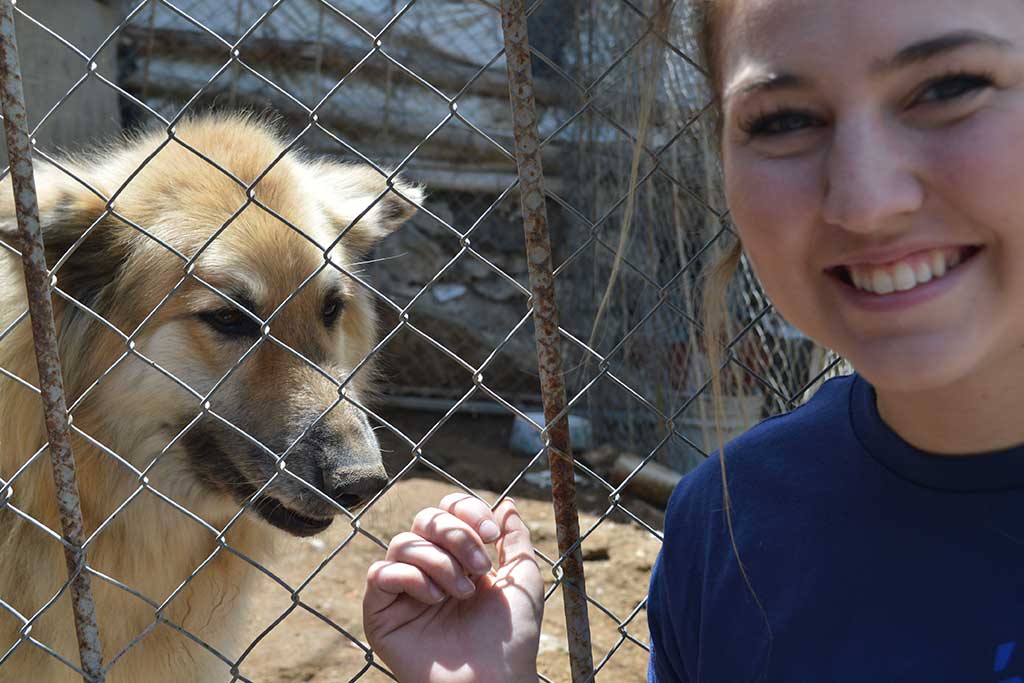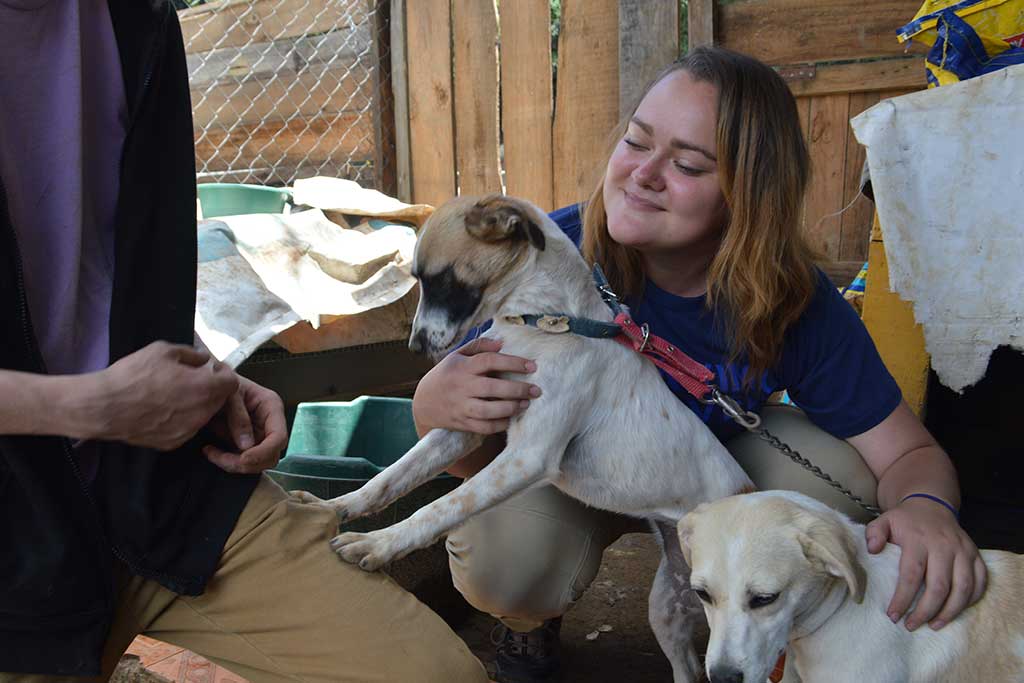After graduating from high school, I was both excited and unnerved to not have a plan. For the first time in my life, I was really calling the shots. Where should I go? What should I do? What was I even interested in given the choice?
I do have a budding interest in veterinary medicine. I grew up on a few acres of farmland and was used to raising chickens, goats, and pigs. Our two chocolate labs always had free range of the house and the farm. They were part of the family.
I knew I would love working with animals, but I didn’t feel ready to financially commit to university. So, I began exploring options for gap-year travel. I landed on a volunteer program in San José, Costa Rica where I was given the opportunity to help out at a dog shelter.

It would be my first trip abroad, and I was relieved that Máximo Nivel arranged homestays and volunteer placements under a field manager. Logistics aside, I knew I was good at working with animals. No language barrier there, right?
But even though animals don’t change based upon their nationality, their treatment differs greatly from country to country. I worked in a shelter with over 50 dogs that had either been abandoned or born on the streets.
It is common in San Jose to see stray dogs traveling the streets together. Even when dogs have “owners,” they are often not let inside the home. This coupled with the scarcity of Costa Ricans who choose to get their animals fixed means the street dog population is always on the rise.
Animal care is not a priority for very many people. The government doesn’t see it as a problem worthy of substantial funding. And this cultural attitude is not only present at a federal level. Pet owners often don’t take their animals to the vet or train them.
San José is recognized for its quickly-developing economic fabric and relatively high standard of living. Despite this, few residents consider animal rights to be a vital concern. And who’s to say they should? Though it pains me to see so many animals hungry, I understand that many families are having to worry about the livelihoods of their human children first.
So many factors must influence the difference in the treatment of animals in Latin America from the example set for me in my own childhood. I didn’t feel like it was my place to come to another country and immediately assume that their treatment of animals was wrong, but I also really wanted to help as much as I could.
Because of this, it was really wonderful to work with the dogs directly. I had hands-on time with them every day. I assisted with their basic training and grooming, as well as a few spay and neuter procedures. But more than anything, I enjoyed playing with the dogs—giving them the love they’d been missing.
I became particularly attached to a caramel-colored mut named Gallo Pinto. He would follow me around the shelter attentively, sitting at my heels while I tended to other tasks. Though I did some basic training exercises with him, Pinto was already mild-mannered, good with people and other dogs.

Unfortunately, this is not the case with many of the dogs that roam the streets. People frequently fail to see the connection between treatment and behavior. Abandoned animals are often aggressive because of the way they have been treated in the past. Cruelty breeds violence.
So, when the volunteer team at the shelter takes in new rescues, their first priority is to help them acclimate to a safe environment. Dogs that seem territorial and ferocious at first can completely transform in a non-threatening environment. Building trust is an important part of relationships with animals, just like any successful relationship between people.
This connection is something that the shelter tries to emphasize when educating prospective dog owners. Though it is impossible, if not misguided, to change an entire culture’s view on pet care overnight, it is certainly fitting to give families already interested in adopting a dog the resources they need to better care for their animal.
By informing adoptive families about good pet care practices, the shelter staff is making an incremental difference in the general perception of what owning a pet means. They’ve also chosen a receptive audience: people who want to adopt a dog, but probably haven’t given thought to training, grooming or veterinary care.

Apart from my time spent playing with the dogs, communicating with their prospective families was one of the most valuable jobs I did for the livelihood of the animals. Because the shelter is a small non-profit organization, developing a relationship with community members is especially important.
The organization relies on volunteers to stay open, so I felt like I was making a difference by just coming to Costa Rica. I’m so glad I took the time to travel before university, and it has only reaffirmed my interest in working with animals. I know I couldn’t have transformed animal care there over the course of one trip, but I was happy to make a difference one wag of a tail at a time.
